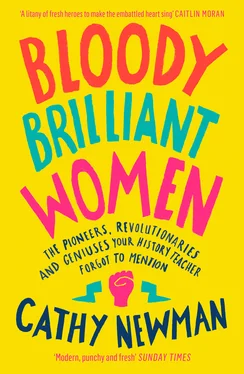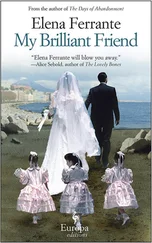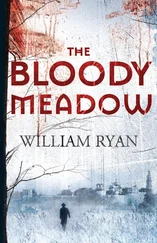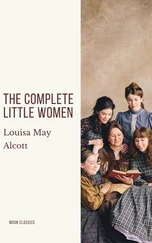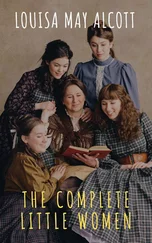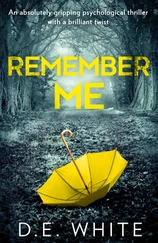Gladstone’s Third Parliamentary Reform Act of 1885 had massively expanded working-class suffrage for men, giving male agricultural labourers the vote but not women. As it happened, 1885 was also the year that a Manchester-based barrister and campaigner called Dr Richard Pankhurst stood for Parliament in Rotherhithe as a Liberal candidate, having tried his luck in Manchester a couple of years before. This time he won 45.7 per cent of the vote. Close, but no cigar. Still, his campaign experience was, his wife Emmeline reflected, ‘a valuable political lesson, one that years later I was destined to put into practice’.
Emmeline Goulden had been born in 1858 into a radical liberal Mancunian family. When Emmeline was still a child, the barrister and would-be politician Richard Pankhurst, already a key figure in the women’s suffrage campaign, was something of a hero. In 1870 he had drafted the first Women’s Suffrage Bill, a Private Members’ Bill which had passed its first and second readings in the House of Commons before being thrown out by Gladstone.
After a spell studying in Paris, during which she nearly married a French man, Emmeline returned to Manchester. On 31 April 1878 her father took her to an anti-Disraeli rally at Manchester’s Free Trade Hall, where she was charmed by the passion and erudition of Dr Pankhurst, who had a high-pitched voice, a red, pointy beard and a ‘tendency to go over the top in his determination to set the world to rights’ – a determination which would ultimately cost him a successful career.78
Richard and Emmeline married – he was forty-four, she twenty – and between 1880 and 1889 produced five children. Christabel was the eldest, followed by Sylvia, Frank, Adela and Harry. (Frank died aged four of diptheria.) In line with Richard’s marital declaration to Emmeline that ‘every struggling cause shall be ours’, the children were brought up to be agents of ‘social betterment’ – drilled into moral shape by their ambitious, disciplinarian parents, who treated them as little adults.
The Pankhursts flitted between a new house in London’s Russell Square and Manchester, Emmeline throwing herself into the role of political hostess while the children jostled for her attention which, when it was given at all, was usually lavished on confident, beautiful Christabel. Sylvia and Adela particularly suffered from this genteel neglect. Sylvia had poor eyesight, but since Emmeline disapproved of glasses she was never allowed a pair and so endured migraines for years.
In this charged environment, dysfunctionality reigned: the squabbles and more serious relationship breakdowns that blighted the Pankhursts’ adult lives were, says Pugh, ‘clearly foreshadowed in childhood’.79 During this time Emmeline was always exquisitely dressed in the latest Paris fashions, and despised women who looked shabby. She would always take ‘enormous trouble over her appearance in public’, as if to reassure doubters that suffrage-seeking women were not the mannish caricatures of satirical cartoons. Sylvia, by contrast, was a notoriously shabby dresser – ‘a proper scruff’, in the words of one former trade union leader.80
Emmeline’s involvement with the women’s suffrage movement was, to begin with, politely constitutional, conforming to the widely held view that only single, unmarried women should get the vote. This was partly tactical, as it was thought that pressing for full female suffrage when 40 per cent of men still couldn’t vote was pointless and unrealistic. Emmeline’s subsequent change of tack had two catalysts. One was her election as a Poor Law guardian in Chorlton in 1894, which saw her campaign successfully for workhouse inmates to have private lockers for their possessions, warmer clothing and better food. The other was the death in 1898 of Richard – aged sixty-four – from a perforated ulcer.
Christabel, meanwhile, had been drifting aimlessly, and in 1901 wrote to her mother: ‘Have you any ideas about me yet?’ She befriended two powerful, highly politicised women, Eva Gore-Booth and Esther Roper, both members of the North of England Society for Women’s Suffrage. They have sometimes been portrayed as a lesbian couple who drew Christabel into their relationship. The Pankhursts’ biographer Martin Pugh thinks this unlikely, but they had a warming, softening influence on Christabel. At Gore-Booth and Roper’s suggestion, she decided to study law. It would prove the perfect training for her quick, lively mind.
Emmeline seems to have been infuriated by Christabel’s political awakening. In 1903, perhaps jealous of Christabel for picking up the suffrage baton, she founded the Women’s Social and Political Union (WSPU), an extension of an earlier suffrage society she’d founded in 1889, the Women’s Franchise League. The WSPU motto, ‘deeds, not words’, underwrote their manifesto of what Ray Strachey calls ‘moral violence’, which was born of impatience with Fawcett’s slow attempt to obtain reform by constitutional means.
Emmeline sought a close relationship with the Independent Labour Party (ILP), but the ILP was ambivalent about female suffrage, fearing that if property-owning women got the vote as the WSPU demanded, they’d be more likely to vote Tory or Liberal. They also feared that allowing women to work would be bad for wages.
In 1905 the ILP leader Keir Hardie, to whom Sylvia had grown close, tried to introduce a bill proposing suffrage for female householders. His failure bolstered the Pankhursts’ confidence and they vowed to turn the WSPU into an ‘army in the field’, recruiting key personnel such as Hannah Mitchell, Flora Drummond – a stout Scot nicknamed Precocious Piglet who liked dressing in military uniform – and Annie Kenney. Annie had met Christabel in Oldham in spring 1906 and pledged allegiance on the spot. The fifth child in a family of eleven, she had left school at thirteen and was needy and damaged – a naive dreamer looking for a good, brave cause. Sylvia Pankhurst would later write that ‘her lack of perspective, her very intellectual limitations, lent her a certain directness of purpose when she became the instrument of a more powerful mind’.81
That powerful mind belonged to Christabel. For her, militancy was important because of the message it sent that women were capable of such behaviour. On 13 October 1905 she was arrested and imprisoned for deliberately spitting at a policeman outside Manchester’s Free Trade Hall, an event which turned the suffragettes, as the Daily Mail called them, into martyr-heroes.
After the Liberals won the 1906 election, Christabel severed her links with the ILP, and the WSPU moved to London, its goal to attract fashionable, bourgeois women and acquire both a funding stream and (with Keir Hardie’s help) a treasurer. A newspaper, Votes for Women , was launched and was selling 22,000 copies by May 1909. A car was bought for Emmeline and a chauffeur hired – former actress Vera Holme, who wore masculine attire and was always called Jack.
Artistic Sylvia, once a prize-winning student at Manchester School of Art and the Royal College of Art in London, oversaw the WSPU’s visual branding – the flags, banners and a broad range of ‘official’ memorabilia – while Emmeline Pethick-Lawrence, a wealthy philanthropist who was co-editor of Votes for Women , came up with the iconic colour scheme: purple (for dignity), white (for purity) and green (for hope). Members were encouraged to wear the colours ‘as a duty and a privilege’. Suffragette ‘uniforms’ were stocked by leading department stores like Selfridges and Liberty.
The WSPU fractured repeatedly over the next few years as new offshoots formed, such as the Women’s Freedom League. On 21 June 1908, a staggering 250,000 people attended a WSPU rally in Hyde Park, only for Asquith to dismiss its significance. Christabel was roused to violence once more and the suffragettes stormed Parliament Square in October 1908, after which Emmeline, Christabel and Flora Drummond were put on trial charged with incitement to rush the House of Commons. Lawyer Christabel scored another PR victory when she called Lloyd George and Gladstone in evidence and ran rings round them, controlling the courtroom ‘like a little singing bird’ (as the caricaturist Max Beerbohm put it). Jailed again, Christabel became a huge celebrity, and Madame Tussaud’s even commissioned her waxwork. But prison ground her down and the Liberal government, more distracted than ever by the effort of forcing through its radical programme under Lloyd George, continued to ignore female suffrage as an issue.
Читать дальше
